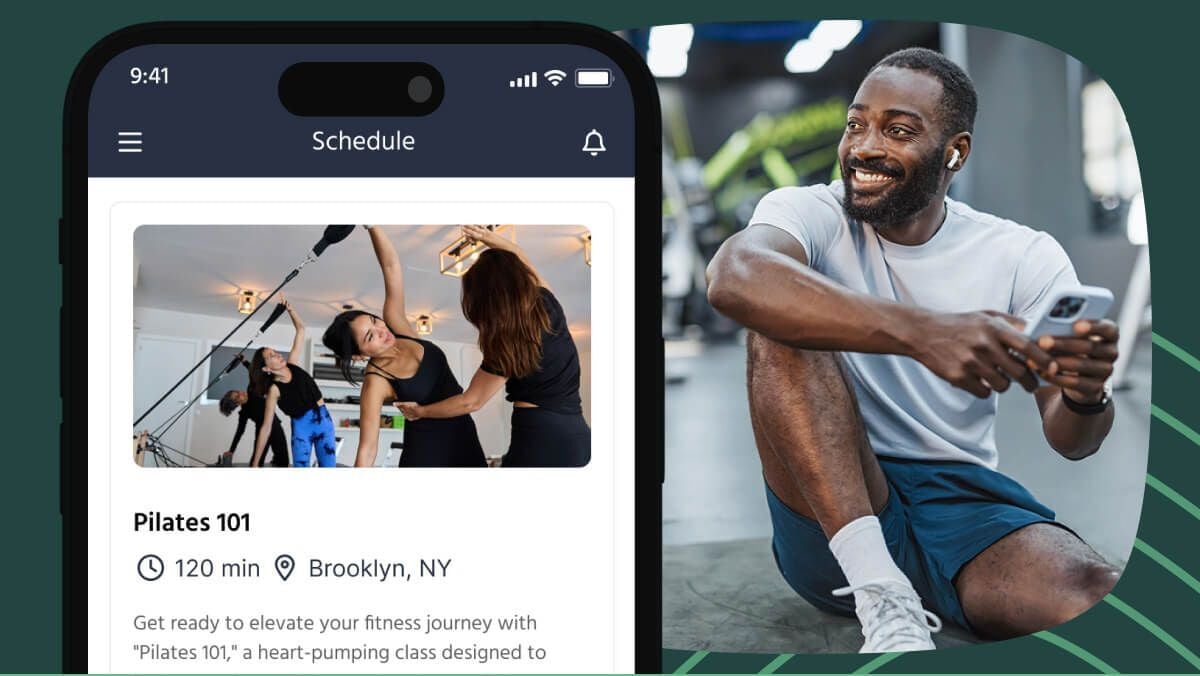Lucy’s yoga business started on a car park rooftop. Looking out from South London, the view was incredible, and publications like Time Out and Evening Standard came and took photographs. Lucy’s bookings quickly went sky-high.
At the time, Lucy was using a Google form to collect bookings. “I thought I was really clever,” she says, “I thought, ‘This is a great way of getting all the details I need.’”
The Google form, however, didn't take payment. And Lucy says that the first summer of doing that rooftop yoga class was an administrative nightmare.
She says, “Trying to handle what was sometimes 40 bookings a day, coming in via Google Forms, which then required me to confirm by email myself and of course, make payment. I realized I was going to have to overbook my classes by a third because of no-shows because they weren't paying upfront.”

How do I deal with no-shows at my studio?
When your no-show customers forget to pay, it can feel like your business is on the edge.
No shows make it harder to track your cash flow and predict your revenue. Just one space missing in each class can strip profit away from your business. Accepting payment at the door creates a system with low accountability.
If a customer misses a class without paying, you can catch them the next class - if they come back at all. But excuses and requests to not have to pay “just this once” can lead to awkward conversations. It’s much easier to have your clients pay the moment they book.
Advance payment ensures that your clients are accountable for their missed classes. And, it gives you clear control when you didn’t have it before. So, how do you get them to pay in advance?
How do I get fitness customers to pay in advance?
When we talked about no-shows with a Crossfit box owner we know, he told us his way of dealing with them before he had online booking:
Before class, he would write attendees’ names on the board. When everyone arrived, he would photograph them next to the board and upload them to a members’ Facebook. There, anyone could see who didn’t arrive and shame them for not attending when they said they would. The box would then save that photo and use it to track no-shows over time.
This was a fun way to poke at people who were flaking out of classes and fit within the atmosphere of that business. But you don’t have to resort to shaming people to get them to attend when they say they will.
With an online booking system, you can take payments from customers based on the schedule you choose.
Once customers understand the rules, you can rely on the policies that you set in your booking system to manage communications for late cancellations and no-shows. But, how do you communicate your policies to your members?
We didn’t have to actually ask or remind our members to pay their fees ourselves.
How do I communicate a no-show policy?
With online booking, members can view your calendar, book classes, and make payments. They can reschedule when they need to. But, how do you communicate what the rules are for late cancellations and no-shows?
- Make sure your rules are clear. Include class cancellation cut-off times.
- Don't accept cash. Make all classes pre-pay.
- Make it easier for your customers to reschedule, and make the rules automatically enforced without being the 'bad-guy'.
- Work with automated waiting lists to keep spaces full in class. Waitlist notifications are baked into the TeamUp mobile app.
Most people don't want to miss a scheduled class. Life just sometimes gets in the way. With clear and enforced rules you will encourage positive behaviour in the best way possible - by handing freedom and control back to your customers.
If you'd like some advice on how software can help you handle no-shows, then book a call with our team, and we'll give you some tips.










